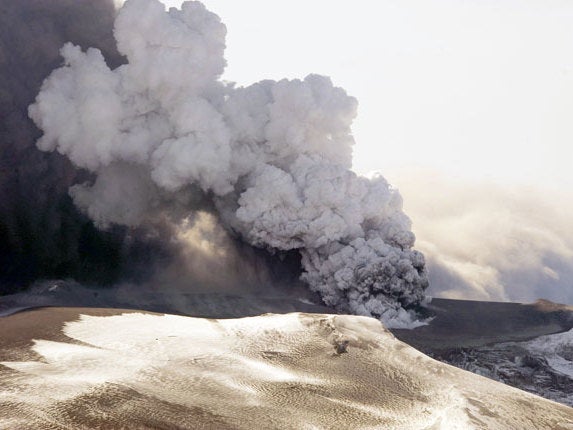Iceland volcano eruption 'could cause global disruption' with ash cloud similar to 2010, scientists warn
Researchers discover huge volume of CO2 emissions at Katla and warn the volcano is 'highly hazardous'

Your support helps us to tell the story
From reproductive rights to climate change to Big Tech, The Independent is on the ground when the story is developing. Whether it's investigating the financials of Elon Musk's pro-Trump PAC or producing our latest documentary, 'The A Word', which shines a light on the American women fighting for reproductive rights, we know how important it is to parse out the facts from the messaging.
At such a critical moment in US history, we need reporters on the ground. Your donation allows us to keep sending journalists to speak to both sides of the story.
The Independent is trusted by Americans across the entire political spectrum. And unlike many other quality news outlets, we choose not to lock Americans out of our reporting and analysis with paywalls. We believe quality journalism should be available to everyone, paid for by those who can afford it.
Your support makes all the difference.A volcano could cause global disruption if it erupts over southern Iceland, scientists have warned.
The Katla volcano is bigger than Eyjafjallajokull which created a giant ash cloud that affected worldwide air traffic eight years ago.
It has been releasing a much larger amount of carbon dioxide (CO2) than previously thought, researchers have discovered.
Kalta, translates to “kettle” or “boiler”, last blew in 1918, having previously done so around every 50 years – leaving it overdue for another eruption. It sits near Iceland’s southern coastline around 25km from Eyjafjallajokull.

“There is no way of telling when it will erupt, just that it will,” Sarah Barsotti of the Icelandic Meteorological Office told The Sunday Times.
She added that the level of disruption to air travel “depends on the intensity of the eruption and the direction of the winds at the time.”
A team of British and Icelandic researchers discovered that Katla, previously assumed to be only a minor gas emitter, is a “globally important source of atmospheric carbon dioxide”.
They found the “highly hazardous” volcano was releasing between 12 and 24 kilotons of CO2 every day.
According to their report, published last week in the journal Geophysical Research Letters, Katla “is one of the largest volcanic sources of CO2 on Earth, releasing up to 5 per cent of total global volcanic emissions.”
Evgenia Ilyinskaya, a research fellow in the Institute of Geophysics and Tectonics at Leeds University, told The Sunday Times that the volume of CO2 was “a clear sign we need to keep a close eye on Katla."
She added that the "findings confirm that there is something going on.”
However, Ms Ilyinskaya later took to Twitter to play down reports that Katla was ready to erupt. She said “that we are in no position to say whether or not (the) Katla volcano is ready to erupt.”
Any eruption is “unlikely to be as serious as in 2010” because the severity of the air traffic disruption following the Eyjafjallajokull event was “very unusual”, she said.
Magnús Tumi Guðmundsson, a professor in geophysics at the University of Iceland, also urged caution in a Facebook post.
He described the emissions measurements as “remarkable” but said it was too early to tell whether the amount of CO2 meant an eruption was imminent.
Join our commenting forum
Join thought-provoking conversations, follow other Independent readers and see their replies
0Comments